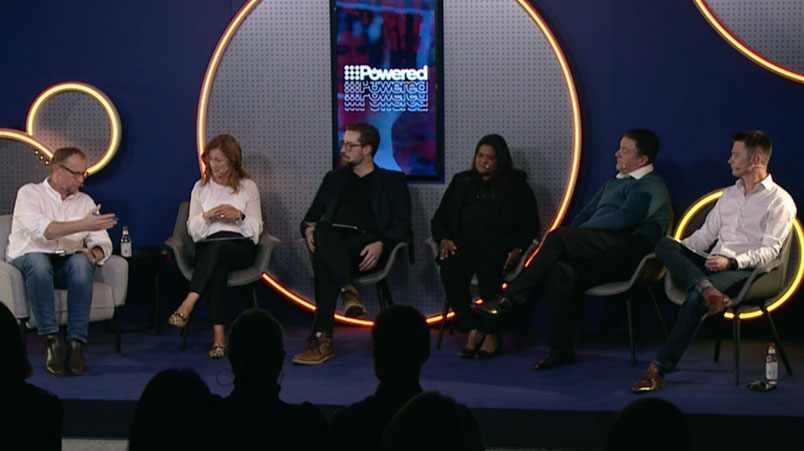Fingerprinting: Cookie sunset triggers warnings of half-baked workarounds, two-speed publisher economy as brands eye direct deals for logged-in audiences, data

"We need to stop thinking we can replace cookies with another cookie-like environment, because that will just lead to more regulation." – James Young, MD, Magnite. Pic: iStock
Resisting the rise of underhanded workarounds to replace third party cookie-style user tracking – sometimes known as fingerprinting – should be central to advertisers’ post-cookie planning or industry risks a more aggressive privacy response from regulators, which have already taken cookies as their first scalp, digital industry leaders warned yesterday. A wave of direct deals between publishers and brands is also building as authenticated, logged-in users become mission-critical – but lazy defaults to the tech giants remain a reality.
What you need to know:
- A panel of digital marketing heavyweights have unpacked the key issues surrounding the demise of the third-party cookie.
- ADMA's Head of Regulatory and Advocacy Sarla Fernando said regulatory changes will force marketers to "upskill in areas they've not delved into before" as company bosses are now on the cookie trail demanding cost and profit implications.
- Nine's Ben Campbell said the demise of the cookie will create a "two-speed economy", with premium publishers able to push for higher CPMs as first-party data becomes the top-dollar currency.
- James Young, MD at sell-side ad platform Magnite, argued that the use of cookie workarounds such as "fingerprinting" risk bringing the industry back to square one.
- Commenting on Google's cookie back-up, FLoC, Adobe's Gabbi Stubbs said the product needed more scrutiny, warning that it could be reengineered by bolting on IP or Mac addresses, creating a "Cookie 2.0".
Marketers forced to upskill
From flicking fingerprinting, figuring out the flaws in Google's AI-driven FLoCs targeting alternative to cookies, or what happens to ad pricing in a two-speed publishing economy, a "Cookies Crumbled" panel at Nine's Big Ideas Store covered almost everything about the end of third-party cookies, now just months away.
A panel of industry leaders from the IAB, ADMA, Adobe, Magnite and Nine discussed the future of the digital marketing landscape, as Google prepares to become the final major browser to bin third-party user tracking.
Covering off issues including prospecting, retargeting, pricing, alternative tracking methods and the shift in publishing power balances, ADMA's Head of Regulatory and Advocacy Sarla Fernando highlighted the single cause for the end of the third party cookies – regulation of a hitherto poorly self-governing industry.
"It's a product of a privacy-first world, [changing] consumer perception and international laws," Fernando said.
"Boards now are asking questions of marketers, because the people who have made these [regulatory] changes to businesses through cookies and mobile identifiers are now [impacting] the mainstream. They are asking marketers, 'what does this mean for us'?"
According to Fernando, this has forced marketers to look at regulations and rules and a way of operating that they've never had to examine before.
"In the past, you could leave it to your compliance teams or you could leave it to your lawyers and they'll give you that run sheet, that one page that you need to know," Fernando said
"But now you need to be able to know what's happening in all these areas so that you can ask the right questions to deliver the right responses for your boards and to know how your future will look."
That now requires a lot of upskilling for marketers, forcing them to delve into previously unknown areas of business, Fernando argues.
ADMA, which is running a cookie masterclass, found many marketers had worked with cookies for so long they were having to go "right back to the basics" when looking for solutions to the impending demise.
She said the question on everyone's lips is about the bottom line impacts.
"How is the revenue going to be impacted? Because don't forget the cost [of cookies] was a lot cheaper. Now you've got your executive team saying, 'well, how is this going to hit our bottom line?'"

L to R: Paul McIntyre, Gabbi Stubbs, James Young, Sarla Fernando, Jonas Jaanimagi , Ben Campbell
Publishers' pricing power
With cookies out of the picture, the new digital world order will place first party-data at the top of the food chain – at least according to the panel.
The conversation eventually turned to the power dynamic that has existed between publishers and advertisers over the last decade, with third-party cookies driving down CPMs, regardless how premium the content.
Nine's Director of Advertising and Data Products Ben Campbell said the demise of the cookie would see a move to a "two-speed economy", with premium publishers reaping the rewards.
He said the split would see those with more signed-in and first-party data able to charge higher CPMs than those using FLoC or anonymous cohort-based identifiers.
"The likely scenario is you could have a two-speed economy, where you have your audiences who are signed in versus people who are anonymous and advertisers will be willing to pay a higher CPM to reach their audiences who they know and can accurately identify," Campbell said.
"If you're a publisher and you have someone signing in or you're a walled garden and you have someone signed in, you're naturally likely to see a higher CPM because you can generate an impression as a result."
However, it's not all good news for premium publishers. Campbell believes there may also be those in the marketing community who will be "too lazy" to understand the changes and default to the walled gardens of Facebook and Google for simplicity.
"I really hope that doesn't happen though."
Adobe APAC Product Marketing Lead Gabbi Stubbs said the market will be likely to see some level of increases in CPMs wherever "quality [data] is attached to a publisher.
"If [a site] is running first-party data, then clearly you're going to be able to ask more for a CPM."
Yet Stubbs insisted that anonymous data would play a role for smaller publishers that may struggle to strike top tier negotiations or direct buys with major brands.
"Cohorts help you do that ,but that might push them into the walled gardens and I share a level of concern about what happens within those walled gardens in terms of how the price might be manipulated," she said.
Fingerprinting gets the flick
Post-cookie workarounds also came under scrutiny.
Fingerprinting, which the industry honed on Safari and Firefox browsers following their attempts to stop tracking, maps unique browser and device traits to build a data profile that can follow people around the web. It is much harder to block and trace than cookie tracking.
James Young, MD at sell-side ad platform Magnite, argued that the use of fingerprinting – which is becoming more closely linked with the development of alternative ID offerings – could see history repeat itself when it comes to cookies.
"These 80 odd identifiers out there in the market, 90 per cent of them rely on probabilistic marketing, where they're scraping things like IP and Mac address to then create a persistent identifier to find that can be used across the internet. It's called fingerprinting and this is a really dirty word now in the industry," Young said
"This risks taking us straight back to where we were, so we need to stop thinking we can replace cookies with another cookie-like environment because that's just going to create more regulation."
Adobe's Gabbi Stubbs agreed, but added that the value of publisher and advertiser relationships moving forward will be based on the value of the data each owns, with fingerprinting merely "a replication of what wasn't working anyway".
Taking the issue from a consumer perspective, ADMA's Sarla Fernando said workarounds like fingerprinting risk creating further friction between publishers, advertisers and consumers, with the latter now in a position of power given the rise of opt-in tracking.
Publishers and advertisers that do the right thing will be rewarded, she suggested.
"If we don't make those same mistakes and we are more transparent with what we're going to do with data, then consumers are going to go along with [our] journey, wanting a better experience and will opt into a lot more than they may do initially," Fernando said.
"The reason why people were opting out before was because they were receiving a lot of spam and stuff that wasn't relevant. So it's an opportunity here to change the mindset of the consumer too."
FLoC this
Google’s current preferred alternative to third party cookie, FLoC, or federated learning of cohorts, also came under the microscope.
FLoC groups people into segments based on what Google knows about them, using an algorithm to determine those segments, or cohorts.
Adobe's Stubbs argues that there are inherent risks around the solution being devised and implemented by a virtual monopoly, and expressed concerns about how private groups of people will be in reality.
"Potentially there is a danger that it can be reverse-engineered or there can be other data points, whether it's IP in the interim or whatever it might be that can be appended to those cohorts," Stubbs said.
"This fundamentally brings us back to Cookie 2.0 and that's one of the dangers around that," said Stubbs.
"There needs to be a different level of scrutiny that sits around [FLoC] as opposed to it being rolled out by one tech player [and accepted to] define privacy, define what the mechanics are for that – and then potentially to be able to monetise it later on as well."
